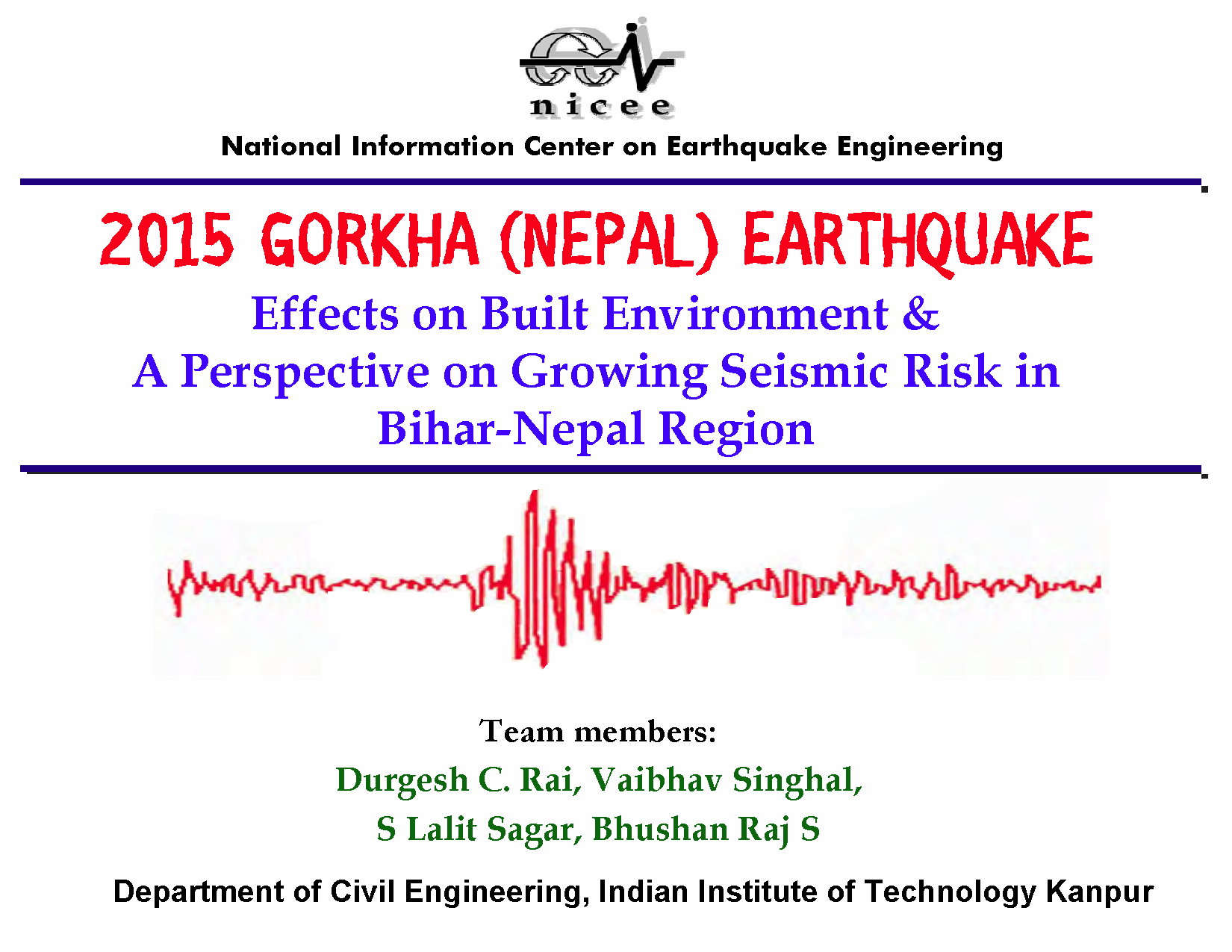


The M7.8 earthquake of April 25, 2015 struck at 11:41 am IST with its epicenter located in Gorkha district (28.15°N 84.7°E) in the central Nepal, about 80 km NW of the capital Kathmandu. It was a shallow focus event (depth 15 km), which was felt in India, Nepal, Bhutan, Bangladesh and China. In Nepal, this earthquake caused unprecedented loss of life and devastation. The worst effected regions are Kathmandu, Bhaktapur, Nuwakot, Sindhupalchok, Dhading and Gorkha. Strong aftershocks of magnitude 6.6 and 6.7 were also felt within a day of the main shock. A large part of the northern India, especially eastern UP, Bihar and north Bengal, also experienced intense shaking during this earthquake. Total deaths were reported as 7,913 in Nepal, 80 in India, 25 in China and 4 in Bangladesh.
As reported, majority of old URM buildings suffered heavy damage in Kathmandu, Bhaktapur, Lalitpur areas which included several heritage structures. Many RC buildings with masonry infills suffered minor to heavy damages to infills and suffered partial to total collapse where frames were either weak or had very poor detailing. Of course, the lack of earthquake resistant features was the primary cause of failures. Many recently built 15 to 16 storeyed buildings suffered heavy damages to masonry walls. In India, since the intensity of shaking was small (less than VI) even poorly built structures did escape serious damage during this event. Damage and partial collapse of free standing masonry walls have been reported in Bihar and UP. Most of the RC-frame buildings in affected regions in Bihar are not constructed as per the Indian code of practice and have many deficiencies as observed in buildings at Kathmandu. Thus the building stock in Bihar is highly vulnerable under expected shaking intensity of IX for a design level earthquake of Indian seismic zone V. This region had already witnessed a Mercalli shaking intensity of X during 1934 Nepal-Bihar earthquake which caused widespread damage in north Bihar districts. Civic authorities in these areas in spite of being aware of the presence of unacceptable level of seismic risk appear to have no risk mitigation strategies. Despite the available knowledge base, it is unfortunate that society is not adequately prepared due to lack of implementation and, therefore, the seismic risk in the region capable of large earthquakes has risen to unacceptable levels which may lead to a large-scale disaster, if not mitigated.
A team of IIT Kanpur (Durgesh Rai, Vaibhav Singhal, Lalit Sagar and Bhushan Raj S) visited the earthquake-affected areas of North Bihar and Kathmandu valley during May 3 – May 9 and later briefed the local community and media about their observations on performance of built-environment and lessons that can be learned to mitigate the seismic risk in the region.
